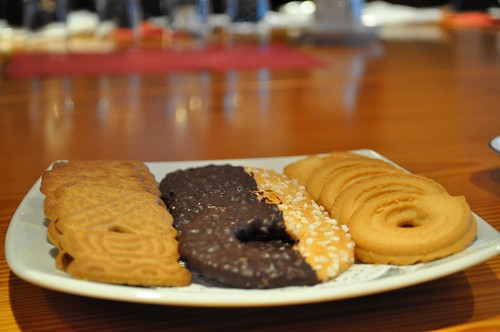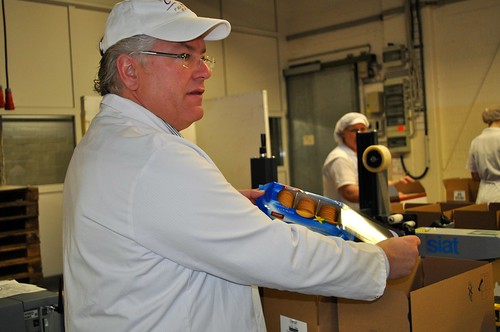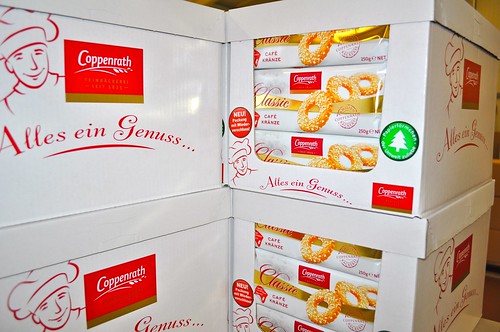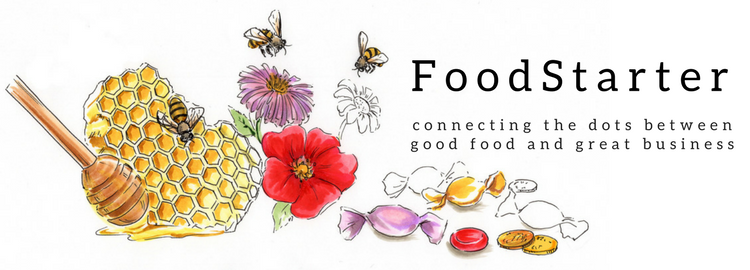German Sweets Tour: Niederegger | Coppenrath
German Candy Industry Report: Part 2
 Did you ever wonder who makes those European cookies you see at the drugstore with cute patterns printed on or a tablet of chocolate…and how they get to our store shelves at some insanely low price like $1.99?
Did you ever wonder who makes those European cookies you see at the drugstore with cute patterns printed on or a tablet of chocolate…and how they get to our store shelves at some insanely low price like $1.99?
I have. So it was no minor thrill to visit one such bakery, in Northern Germany. In my second report from an epic mid-sized confections tour with German Sweets , learn about Coppenrath Fein Bakerei, a several generation old, family bakery whose intention is to produce natural, excellent baked goods at a price accessible to any consumer.
The answer to that first question came from Andreas Coppenrath: volume. Coppenrath sells in about 100 countries, with 15,000 tons of cookies annually emerging from a relatively small factory where, in the high season, 250 people work. While this may sound like a lot, their reach in the U.S. is limited by their capacity to serve our nationwide chains…as we found with many of Germany’s old family owned sweets businesses. (As someone who enjoys discovering products abroad we can’t get at home, it’s not necessarily a bad thing!)
On our factory tour, Andreas particularly impressed me with his leadership skills, openness about the operations, and innovation. For example, 6-packs of Sponge Cakes for tart bases get sold alongside strawberries. We loved their cookies (especially one reminiscent of a Milano but with coconut).
Andreas left no question unanswered — with something to illuminate bakers and food manufacturers of all sizes:
Some Background – “Honor the past and go for the future.”
This sixth-generation family business started in 1825. World War II might have felled the company, but Andreas’ grandmother, suddenly a single mom in 1942 after her husband died, managed to keep it going with eight kids, all the while harboring Jewish locals in her cellar. The town memorialized her with a street in her name.
 Today Coppenrath is the leading producer of speculaas (or speculoos, in Wikipedia and the Netherlands), a seasonal spice cookie pressed by brass rollers into shapes like windmills, kids, and animals. “Speculaas” may ring a bell. It is also the magic ingredient used in “cookie spread” as well as a filled chocolate currently sold at Trader Joe’s.
Today Coppenrath is the leading producer of speculaas (or speculoos, in Wikipedia and the Netherlands), a seasonal spice cookie pressed by brass rollers into shapes like windmills, kids, and animals. “Speculaas” may ring a bell. It is also the magic ingredient used in “cookie spread” as well as a filled chocolate currently sold at Trader Joe’s.
Secrets to Sweet Success
Employees are trained in bakery — rather than only in a rote production method — so they can understand if the smell, texture, and result work or how small changes might affect the recipe.
Keep employees very happy. Production workers get a daily 3-4% of salary bonus based on meeting production goals. Andreas has an open door policy. No wonder some employees have been there 40 years.
One line, many cookies. They can switch heavy brass rollers to imprint patterns. At a high enough volume Coppenrath can produce various designs and co-pack for others who want custom designed cookies.
The company prototypes products not in small batches but on the production machines to see what the real result would be.
Much equipment has wheels so it can move around as needed. In one shift they can produce 40,000 packages. In 24 hours, 100,000 600-gram packs.
They source flour from several mills. Flour quality and flavor varies by wheat growing region. They blend to their specification and choose the flours that fit the best. They visit their suppliers to check the facilities.
Challenges
Ingredients prices have skyrocketed (worldwide, really), with sugar increasing from 500 to 900 Euros per ton in one fell swoop. 2011 was the worst year.
Every market has different taste. English market likes colored cookies. Netherland fatty cookies. The more north you go in Germany the more popular dark chocolate. Milk chocolate and sweeter taste, more so in the south. The solution? Pick your market and develop products accordingly.
The UE requires ingredients traceability. For example, eggs can be tracked down to the specific chicken.
International labeling is also tricky. Some countries allow a sticker with their language and others require it printed on.
Packaging Innovations and Challenges
Coppenrath’s resealable packaging for cookies in trays struck me as brilliant. You peel back the top, lined with sticky stuff on the edges, then peel it back closed when you’re done. This format is great for snacking, keeping the product fresh, and making it easier to open the package.
Andreas conducts in-store research himself, going to departments unrelated to his products, like toilet paper. He looks away then quickly turns to the product display to see what catches his eye.
After observing and learning that packaging where a person on the package looking directly at you (or the camera) is the most eye catching they developed a counter top display case with single serve cookies. (It’s true! Check store shelves and you’ll find a striking number of people gazing back into your eyes like the Brawny man.) Each pack includes a thought-provoking saying or quote.

They produce efficient, useful packaging. In a year they use one million meters of cookie packaging, all printed at once. Folding cardboard cookie tray gets assembled automatically without glue, making it perfectly recyclable.
Mixed cases in 1/4 pallet sizes allow an in-store standalone display simply by un-shrink wrapping. This is particularly popular in small stores. Six-packs of cookies in plastic carry packs with a handle are popular at warehouse stores. Cookie totes!
My favorite tidbit: Cookies with chocolate can ship packed below the water line in containers as refrigeration.
US Availability
Coppenrath sells through four importers in the U.S. Look them up at Coppenrath Fein Bakerei.








